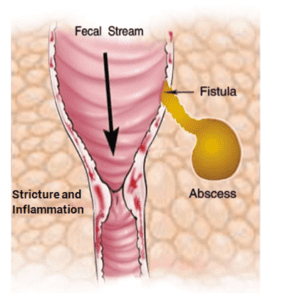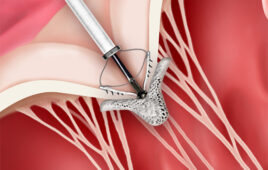
[Image from Cleveland Clinic]
“We pioneered this procedure,” said Bo Shen, medical director of Cleveland Clinic’s IBD Center, in a press release. “And our research shows that it is effective and can have advantages over other conventionally used treatments, such as medical therapy, balloon dilation and surgery.”
Shen and coauthor on the research Nan Lan studied the records of 85 patients with strictures that were treated by needle knife stricturotomy (NKSt) between 2008 and 2016 at Cleveland Clinic’s Center for IBD. A total of 231 NKSts were performed in that time period on 85 patients, some of whom had to have multiple strictures performed. The scope passed through each stricture in all of the patients.
NKSt treatment for IBD gives patients a better quality of life as opposed to surgical treatments.
“Multiple bowel resection surgeries can shorten patients’ intestinal tracts while noninvasive procedures preserve them,” said Shen.
Strictures occur when the intestines narrow because of inflammation and scarring and are a common side effect of IBD.
They are usually treated with surgery or an endoscopic balloon dilation (EBD) procedure that stretches out constricted areas. These procedures can be risky because they can cause perforations and intestinal bleeding. The therapeutic effect generally only lasts 3 to 6 months before a stricture comes back.
The Cleveland Clinic study showed that the time it took between endoscopic and surgical interventions and the time it took from the treatment to the return of the stricture was longer in patients who received NKSt treatment before any other treatments.
“For example, if you need EBD every 3 months, you need it every 6 months after NKSt,” said Shen.
Shen had previously used endoscopic needle-knife technology for treating strictures in the upper GI tract before he predicted that it might be a good therapy for IBD patients with strictures in the lower GI tract.
This research may help physicians be more precise when opening strictures.
“You have more control over how deep you cut and where you cut,” said Shen. “This is a major advantage.”
The research was published as the cover story ion the April 2017 issue of the Inflammatory Bowel Diseases journal. It will be presented by Lan this month at Digestive Disease Week 2017.
[Want to stay more on top of MDO content? Subscribe to our weekly e-newsletter.]




